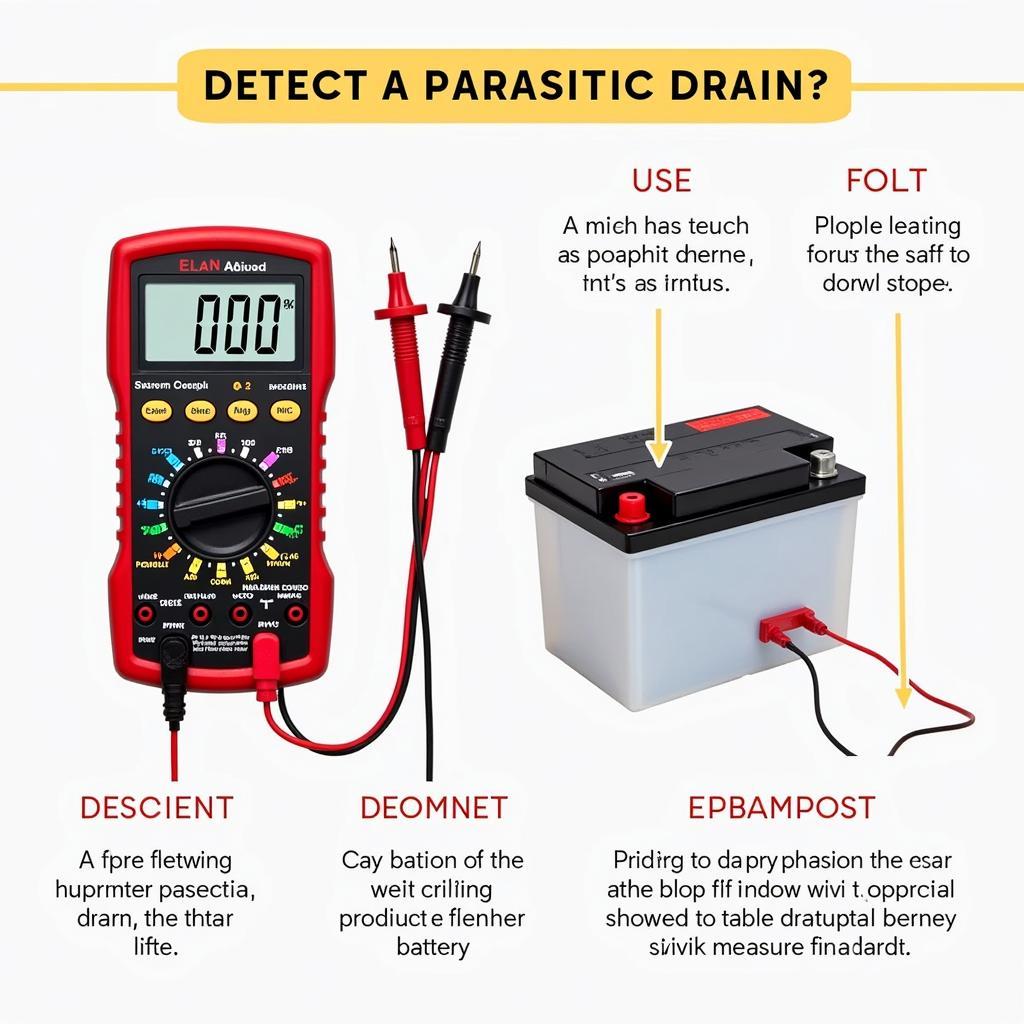Owning a classic car like a 1973 VW Super Beetle is a labor of love. But when that flashing brake warning light throws a wrench in your next cruise, it’s time to troubleshoot. A flashing brake warning circuit on your vintage Bug can signal several issues, from low brake fluid to more complex problems within the hydraulic system. Let’s dive into diagnosing and hopefully resolving this common headache for classic VW owners.
Common Causes of a Flashing Brake Warning Light
Before we break out the toolbox, it’s essential to understand what makes that little red light blink. In many vehicles, and especially in a classic Super Beetle, the brake warning light is designed to alert you to two main problems:
- Low Brake Fluid: This is the most common culprit and, luckily, the easiest to address. As brake pads wear down, the brake fluid level in the master cylinder naturally decreases.
- Hydraulic System Issues: A flashing light can also indicate problems within the brake system itself, such as a faulty brake pressure differential valve or a leak in the hydraulic lines.
Troubleshooting Your Super Beetle’s Brakes
Let’s walk through some steps to help you pinpoint the cause of your flashing brake warning circuit.
-
Check Your Brake Fluid Level
- Locate the master cylinder: In a 1973 Super Beetle, you’ll find the master cylinder under the front hood (bonnet), on the driver’s side.
- Inspect the reservoir: The brake fluid reservoir is a clear plastic container mounted on top of the master cylinder. Check the fluid level – it should be between the minimum and maximum lines.
- Add brake fluid (if necessary): If the fluid level is low, carefully remove the reservoir cap and top it off with DOT 3 brake fluid, the correct type for your Super Beetle. Be sure to use a clean funnel and avoid spilling any fluid on your paint, as it can be corrosive.
-
Inspect for Brake Fluid Leaks
- Visual check: Carefully examine the area around the master cylinder, brake lines, and each wheel cylinder for any signs of fluid leakage. Pay close attention to connections and fittings.
- Signs of a leak: Brake fluid is typically clear or slightly amber in color and has a slightly oily texture. Wet spots, drips, or a damp appearance on any brake components could indicate a leak.
-
Check the Brake Pressure Differential Valve
- Locate the valve: The brake pressure differential valve is usually located on the side of the master cylinder or along the firewall. It’s a small cylindrical device with two brake lines connected to it.
- Inspect for leaks: Check the valve and its connections for any signs of brake fluid leakage.
-
Assess Brake Pad Wear
- Visually Inspect the Brake Pads: If possible, have a look at the brake pads through the wheel spokes. Excessively thin brake pads can sometimes trigger a warning light, even if the fluid level is adequate.
-
When to Call in the Pros
If you’ve gone through these steps and your brake warning light is still flashing, it’s best to consult a qualified mechanic specializing in vintage Volkswagens. Problems like a failing brake pressure differential valve, internal master cylinder issues, or air in the brake lines often require specialized knowledge and tools to diagnose and repair properly.
A Word of Caution from a Vintage VW Specialist
“I can’t stress enough how crucial it is to address brake problems immediately, especially in a classic car like your Super Beetle,” says John Smith, owner of Smith’s VW Repair and a seasoned mechanic with over 20 years of experience. “These cars weren’t designed with the same safety features as modern vehicles, so a small issue can quickly escalate into a dangerous situation.”
Keep Your Super Beetle Safe and Roadworthy
Regular maintenance is key to keeping any vehicle running smoothly, but it’s especially important for vintage cars. A flashing brake warning light is your Super Beetle’s way of saying, “Pay attention!” By understanding the potential causes and taking the appropriate steps to troubleshoot the problem, you can ensure your classic Bug continues to provide you with miles of enjoyment and, most importantly, keeps you safe on the road.

